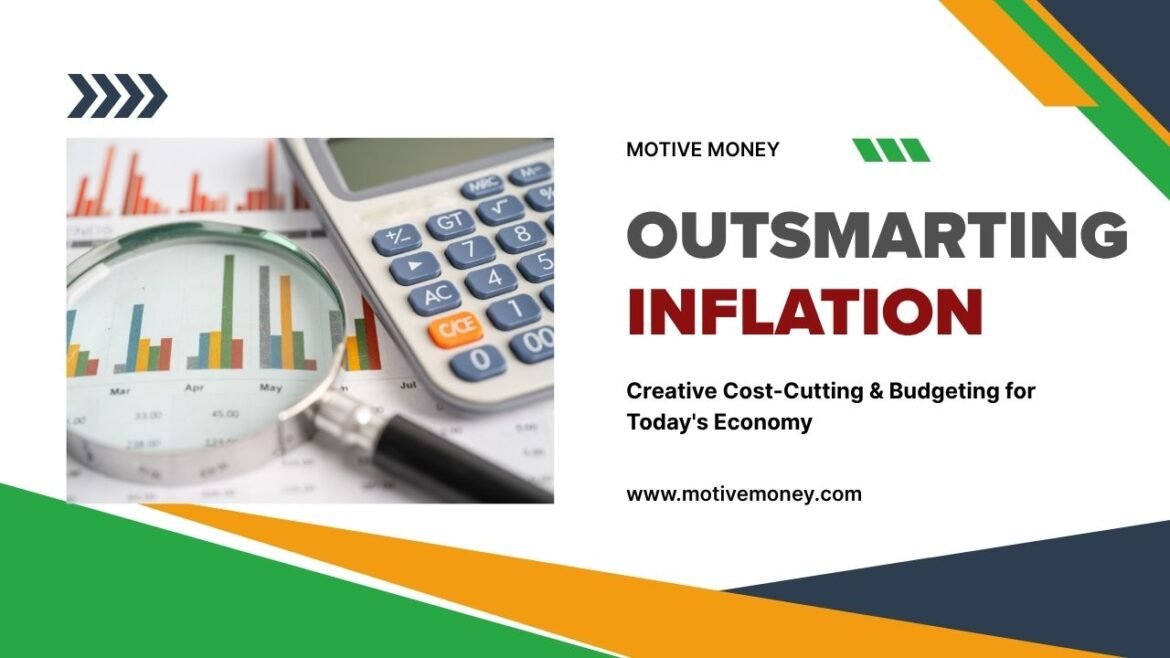For many, the echoes of recent inflation surges are still felt in every grocery bill, utility statement, and fuel pump. While headlines might suggest economic stability, the reality for everyday families is that the cost of living remains significantly higher than just a few years ago. This “new normal” demands a smarter, more agile approach to budgeting and cost-cutting.
It’s easy to feel squeezed, especially for young professionals and families managing new financial responsibilities. But adapting to these economic realities doesn’t mean sacrificing your quality of life. Instead, it’s an opportunity to embrace creative cost-cutting strategies and optimize your budget with precision, ensuring your hard-earned money works harder for you.
In this guide, we’ll dive into practical, often overlooked ways to outsmart inflation and bolster your financial resilience. We’ll explore innovative budgeting techniques and clever saving hacks to help you stretch your dollars further, build your savings, and confidently navigate today’s economic landscape.
Why “New Normal” Budgeting is Essential Now
Even if inflation rates have cooled, the cumulative effect of past price increases means your money buys less than it used to. This makes proactive budgeting and cost-cutting more crucial than ever for:
- Maintaining Purchasing Power: Ensuring your income can still cover your needs and wants.
- Protecting Savings: Preventing the erosion of your savings’ value.
- Achieving Financial Goals: Staying on track with long-term aspirations despite rising costs.
- Reducing Financial Stress: Gaining a sense of control over your money in an uncertain environment.
Creative Cost-Cutting Strategies You Can Implement Today
Beyond the obvious advice to “spend less,” here are some actionable and often overlooked ways to trim your expenses:
- The “Subscription Audit” (Deep Dive): Go beyond streaming services. Check bank statements for gym memberships you don’t use, app subscriptions, delivery service fees, cloud storage plans, or even niche software. Use tools that help identify these. For a seamless way to track these, refer to our post: Your AI Co-Pilot for Cash: Smart Budgeting & Expense Tracking with Artificial Intelligence.
- Optimize Utility Usage Smarter:
- Energy Efficiency Audit: Many utility companies offer free home energy audits. Small changes like sealing drafts or optimizing thermostat settings (e.g., using a smart thermostat) can yield significant savings.
- Negotiate Internet/Cable: Call your provider annually to negotiate a better rate or threaten to switch. Often, they’ll offer retention deals.
- Meal Planning & Leftover Reinvention:
- Strategic Grocery Shopping: Plan meals around sales, buy in bulk for non-perishables, and avoid impulse buys.
- “Use It Up” Challenge: Dedicate one meal a week to using up leftovers or ingredients you already have, reducing food waste and grocery bills.
- DIY & Repair (Where Possible): Before calling a professional, check if a simple repair (e.g., leaky faucet, minor appliance fix) can be done with online tutorials.
- Insurance Review: Don’t set and forget. Shop around for auto, home, and even life insurance annually. Even a small saving per month adds up. Consider bundling policies for discounts.
- “No-Spend” Challenges: Dedicate a day, a weekend, or even a week to spending absolutely no money on non-essentials. This resets habits and reveals unnecessary spending.
- Leverage Public Services & Free Entertainment: Explore your local library for books, movies, and events. Look for free community events, parks, or hiking trails instead of paid entertainment.
- Transportation Optimization: If possible, consider carpooling, public transport, biking, or walking for some errands. Optimize driving routes for fuel efficiency.
Budgeting Methods to Help You Stick to Your Plan
Simply cutting costs isn’t enough; you need a budgeting framework to make it stick:
- The Zero-Based Budget: Every dollar has a job. Allocate every dollar of your income to a specific category (saving, debt, expenses) until your income minus expenses equals zero. This ensures no money is left unaccounted for.
- The 50/30/20 Rule: A simpler method. 50% of your income for Needs, 30% for Wants, and 20% for Savings & Debt Repayment. This provides a clear guideline. Learn more about this popular budgeting method in our guide: The 50-20-30 Rule: The Simple Budgeting Strategy That Can Change Your Life.
- The Envelope System (Digital or Physical): Allocate cash (or digital equivalent) to specific spending categories at the beginning of the month. Once the money in that “envelope” is gone, you stop spending in that category.
- Automate Your Savings: Set up automatic transfers to your savings or investment accounts immediately after payday. Pay yourself first. To maximize your savings growth, explore: Make Your Money Work Harder: A Guide to High-Yield Savings Accounts.
Conclusion: Master Your Money, Master the Economy
Navigating today’s economy with its persistent cost pressures requires an active and intelligent approach to budgeting and cost-cutting. It’s not about deprivation, but about intentional spending and finding creative ways to stretch your income further.
By implementing these strategies and embracing a robust budgeting method, you can regain control over your finances, build stronger savings, and ensure your financial well-being remains resilient, no matter what economic shifts come your way. Take charge of your money, and you’ll outsmart inflation every time.
Discover more from Motive Money
Subscribe to get the latest posts sent to your email.
